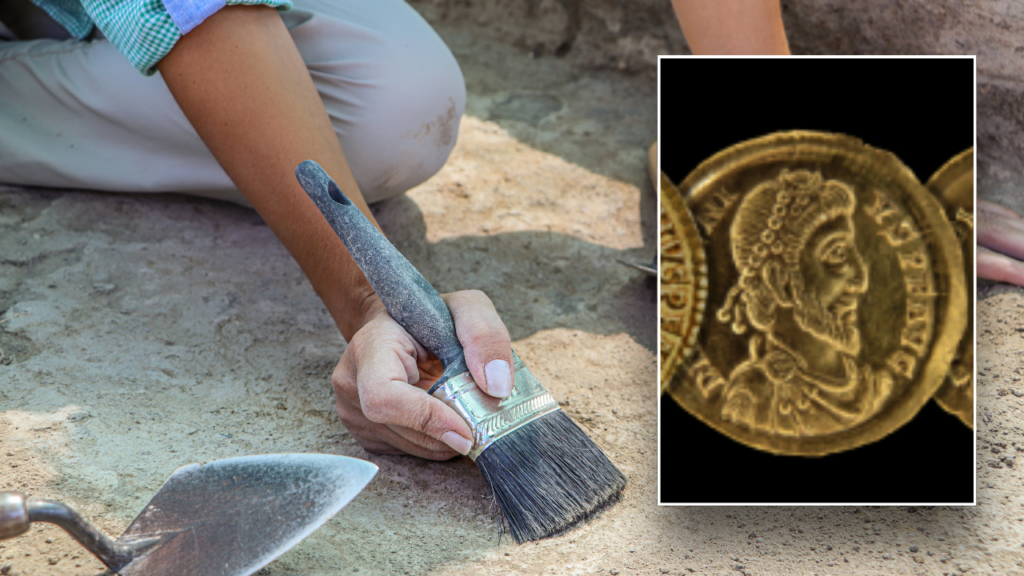In a remarkable turn of events, officials from Luxembourg have recently uncovered an “extremely rare” trove of gold coins dating back to the fourth century A.D. This significant archaeological discovery marks the conclusion of an extensive excavation project that has spanned four years. The announcement was made by the National Institute for Archaeological Research (INRA) of Luxembourg, highlighting that a total of 141 ancient coins were retrieved from the site.
The excavation process bore particular challenges, as the area in which the coins were discovered had remnants of World War II land mines. Authorities made it a point to conduct the excavations with the utmost caution and thoroughness, necessitating an extended timeline to ensure safety. The INRA emphasized the necessity of careful operations due to the presence of munitions and other explosive devices that had remained in the region since the war. Consequently, archaeologists collaborated with the Luxembourg Army’s Mine Clearance Service (SEDAL) to facilitate safe digging practices.
Among the notable findings is a variety of coins that feature the likenesses of nine Roman emperors who reigned between 364 and 408 A.D. Specifically, one of the coins represents Eugenius, a controversial figure who was deemed an illegitimate ruler by the Eastern Roman Empire, commonly known as the Byzantine Empire. Eugenius governed the Western Roman Empire from 392 to 394 A.D., yet remained a contentious figure until he met his end at the Battle of the Frigidus in 394.
As experts examined the finds, it became clear that the coins were “solidi,” which signifies they are composed of pure gold. The INRA conveyed in its statements that the Luxembourg government has allocated a total of 308,600 euros (approximately $318,000) to the “beneficiaries” of this ancient hoard. This valuation was determined following assessments by independent numismatic experts, who took into account both the exquisite condition of the solidi and the existence of several rare specimens, particularly three coins issued by Emperor Eugenius whose reign lasted merely two years.
Despite the excitement surrounding this discovery, archaeologists are left puzzled over the reasons behind the burial of such a valuable cache of coins. As research continues, experts are delving into possible motivations for the hoard being hidden away. The INRA underscored the importance of this find, describing it as a major archaeological breakthrough. The ability to examine an entire ancient monetary deposit within its archaeological context is extremely rare, and this investigation may potentially illuminate the historical context for why the coins were buried.
The Luxembourg discovery is not an isolated incident but rather a part of a broader narrative of ancient treasure finds across Europe in recent months. In a similar vein, English officials recently announced the discovery of a thousand-year-old hoard of coins in Suffolk, situated at the location of a proposed nuclear power plant. Additionally, archaeologists in Norway unveiled Viking graves containing treasures such as coins and jewelry last fall.
As these fascinating discoveries unfold, they contribute valuable insights into the rich tapestry of European history. The enthusiasm surrounding each find serves to underscore the enduring human fascination with ancient artifacts and the stories they carry through time. For those interested in more lifestyle-related articles and updates, Fox News Digital offers a comprehensive collection of such content on its lifestyle section, inviting readers to stay informed on the latest in archaeology and history.
For further inquiries or story tips, readers can reach out to Andrea Margolis, a writer for Fox News Digital and Fox Business, via email at [email protected].











